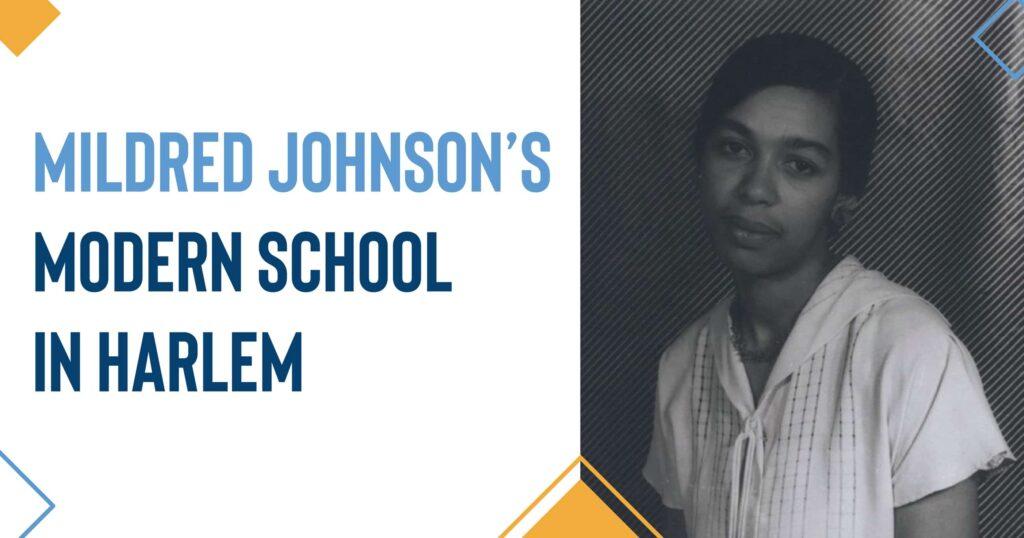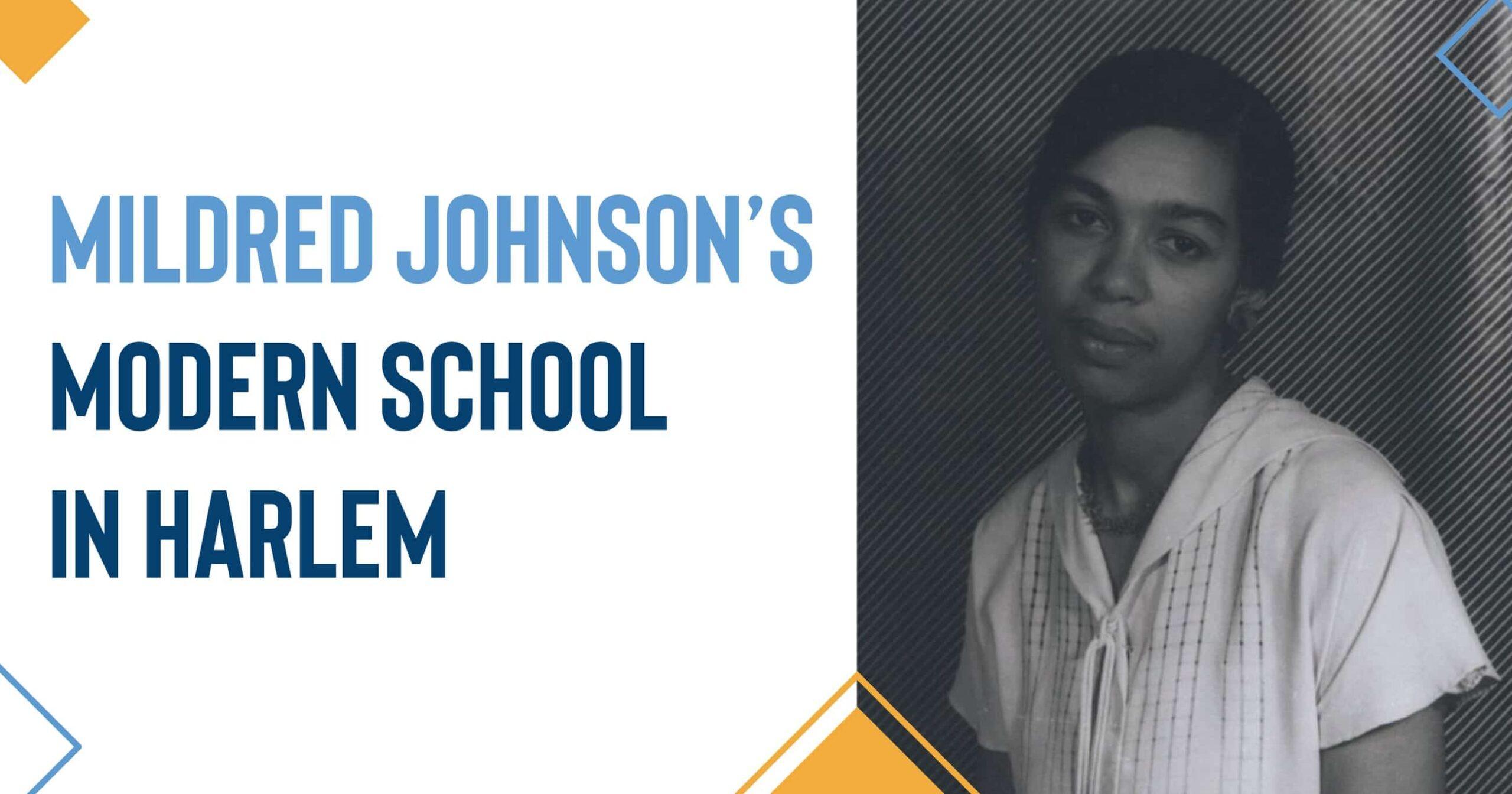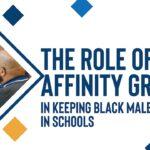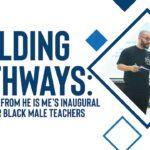- ronaldb@theocmg.com
- April 10, 2023
- Education
The School with the Perfect Name: Mildred Johnson’s Modern School in Harlem

Exploring the history of Black education and Black educators during Black History Month uncovered a gold mine of amazing stories. Black History Month is over, but March is Women’s History Month, so here is the story of Mildred L. Johnson and a school that exemplified what He is Me Institute and other advocates for education equity still strive for today, the opportunity for the highest quality education for Black children. Johnson advocated for it . . . and she also made it happen for 65 years at The Modern School in Harlem.
Mildred Johnson’s Modern School in Harlem

Mildred Johnson was born in 1914 in Florida and her family moved to Harlem shortly after her birth. Her parents were well-educated and wanted to ensure that Mildred was, too. Mildred essentially grew up in a school. Her mother taught her to read when she was barely 4 years old. Her father, J. Rosamond Johnson, was a well-known musician who ran a music school. In a 2004 interview she said, “I was born a teacher. I was always meant to teach children.” The Johnsons hosted some of the famous names of the Harlem Renaissance in the ‘20s and ‘30s in their home. Mildred’s father is best known for setting a poem to music, written by his brother, that became the Black national anthem, Lift Ever’y Voice and Sing.
In segregated New York City in 1919, there was only one private school anywhere near Harlem that accepted Black children, and not surprisingly, it admitted only one or two per grade, but Johnson was one of them. She was accepted into the progressive Ethical Cultural School’s kindergarten class. Once it became obvious how well she could read, she was immediately promoted to first grade. She thrived academically, and after graduating, she became the first Black graduate of the Fieldston School’s teacher training program. (Fieldston was the high school and vocational training school affiliated with the K-8 Ethical Cultural School.)
The teacher training was a 3-year program, with two years of classroom studies and a year of practice teaching in order to get state certification. But because she was Black, all of Mildred’s applications for practice teaching were rejected. Undeterred by rejection and racism, what did Johnson do? She started her own school to fulfill the practice teacher requirement–at age 20! Johnson was determined to teach, and she believed that Harlem’s school children deserved something better than what local public schools were offering. The Modern School started with eight children in an Episcopal church near Johnson’s home. Within three years, Johnson was able to move into a larger building and 100 students were enrolled. Within ten years, typical enrollment at The Modern School was 300, and the school moved to an even larger building. “The children found me and the parents found me. I didn’t have to look for students,” Johnson said in the 2004 interview.
Mildred Johnson was a tall dignified woman who had the posture of a dancer, since she had studied dance during her school years. She spoke slowly and precisely, and would not be mistaken for an activist or reformer. But she was one. She is remembered as a model for the agency of Black women. Her decision to start her own school, and her desire and ability to give children an education superior to the local public schools was her “superpower” and her 65-year-long protest against segregation, racism, and the city’s neglect of Harlem public schools.
Juanita Isabel Coleman was a Modern School aluma who Johnson inspired to become a teacher. She wrote her master’s thesis at the Bank Street College of Education about Johnson. She said Black history was infused in the school’s curriculum, never separated from the rest of history, literature, or any subject. She said the school day began by singing the Black national anthem, and Blackness itself was not often discussed as a separate topic, except as a subject of pride.
Coleman recalled that when it was time for children to leave The Modern School and move on to a private high school, Johnson would call principals at schools where her students were applying. She would ask if the school accepted Black children. The answer was most often, “no.” One principal said, “We really aren’t ready for Negro youngsters,” to which Johnson replied, “I agree. You certainly are not ready.”
The Modern School was as unique as Mildred Johnson was. It was extremely progressive long before the 1970s trend toward progressive education. Johnson followed her instincts and her conscience. She defied the Board of Education’s regulation that children under age four could not attend school other than a nursery school, which was strictly for play, not learning. Johnson said, “if they can walk, they can come to this school,” and accepted children as young as 18 months. Instinctively, she understood that toddlers learn from older children as well as from adults, and the window for learning up to age five is the most influential on development. She trusted toddlers’ innate ability to learn much more than they are given credit for. Somehow she understood what her famous academic contemporaries, Jean Piaget and Erik Erikson, were “discovering” in their research of early childhood development. Johnson’s instinctive knowledge brought preschoolers, kindergarteners and elementary school students together at The Modern School at a time when there was no such thing as public preschool, when private “nursery schools” were rare if not nonexistent for Black children, 60+ years before the Federal government established Head Start in 1998 for 3-5 year-olds from low-income families.

She was ahead of another famous educational researcher–fifty years ahead of Harvard Professor Howard Gardner who published a book in 1983, Frames of Mind: the Theory of Multiple Intelligences. The Modern School has always taught to multiple intelligences. That is, it did not depend solely on the pencil, paper, books, and blackboard as tools for learning, as many schools still do today. Johnson understood how children learn through songs, music, rhythm, movement, drama, building things, and Nature. These were integrated into everyday lessons at The Modern School. “Mother was not impressed by the theory of multiple intelligences. She had been teaching through music and dance for so many years,” said Mildred’s daughter, Melani Edwards, in a 2020 presentation at Columbia University’s Teachers College.
Today, in “Covid times,” summer learning loss is a more serious concern than ever. Even before Covid, the National Summer Learning Association said elementary school children can lose up to two months of math learning over the summer, and learning loss is progressively greater as students move through the higher grades. Summer camp or other structured summer programs where children’s minds and bodies are engaged, even if not in academic learning, help to minimize summer learning loss. Mildred Johnson knew this, too.
When Johnson created The Modern School, she also created Camp Dunroven, located in Pine Bush, N.Y. About half the school’s students went with her and a crew of The Modern School teachers every summer from 1933 until 1965. There were many summer camps for children in New York, but for white children only. Johnson’s camp gave Black children from the city an experience that the segregation of the day would have otherwise prevented them from having. Coleman, the alumna who wrote about Johnson, said, “I had never been in a forest or a cornfield. I have never breathed mountain air or tasted well water. I had never seen how the night sky can make a star-filled dome over your head . . . all of these I first knew at Dunroven.”
Today there is a growing body of research on “the same race teacher effect,” or as He is Me prefers to call it, “the Black Male Teacher effect.” A 2017 study from Johns Hopkins University is the research most often cited, but other studies are underway and dozens of articles have appeared in academic journals and popular publications about the same race teacher effect. One of the researchers on the Hopkins study summed it up, “We’re seeing that spending just one year with a teacher of the same race can move the dial on one of the most frustratingly persistent gaps in educational attainment — that of low-income black boys. It not only moves the dial, it moves the dial in a powerful way.” This is, in fact, one of the principles on which He is Me’s Education Equity Initiative is based.
The Modern School, an all-Black school, could be considered a rare and perhaps pure example of the same race teacher effect. Alumni who have been interviewed at various events or for oral history projects in Harlem all say the same things about their Modern School years. They felt safe, secure, able to be themselves. They were challenged intellectually. They were exposed to the diversity and many cultural institutions of New York City. They were exposed to Nature. They gained great pride in their African-American heritage. And they were high achievers in school who became high achievers in life.

Karen Taylor, director of “While We Are Still Here,” a Harlem-based heritage-preservation group, has interviewed many Modern School alumni for her organization’s oral history project. She says what she learned is, “Before it became popular in the 1970s, Mildred Johnson was very much into progressive education; that is, more child-centered lessons and curriculum. And the level of education was high– thus far all of the people I have met who attended that school have extraordinary intellect, and they’ve achieved extremely high professional positions.”
Dr. Deidre B. Flowers is one of those high-achieving alumni. She attended the school in the 1990s. (It losed in 1999.) She is now an Assistant Professor and Interim Director of the African Studies program at Queens College. A lifelong resident of Harlem, Dr. Flowers is working on a book about Mildred Johnson and The Modern School, “A School for The Modern Times: Mildred Louise Johnson and The Modern School of Harlem.” She said the Modern School was like a home and the teachers were like family more than anything else. “I was starkly aware of how different my education was from my friends who attended public schools,” she said in a video called A Renaissance Education. “What MIldred Johnson did was re-imagine and re-birth what education should be for all African-American children “ Flowers said.
Learn More
In a segregated New York City of the 1930s, a young Black woman, Mildred L. Johnson was unable to secure a teaching job. Undeterred, she went on to imagine and built a progressive, affirming, Black independent school that she called The Modern School. It operated for more than 60 years in Harlem’s Sugar Hill. Watch a video presentation from December 2020, A Renaissance Education: Mildred L. Johnson and the Harlem School She Built. Sponsored by Teacher’s College, Columbia University.
Listen to a short sound cloud about Mildred Johnson, by Karen Taylor, Harlem resident and founder and director of “While We Are Still Here,” a Harlem-based heritage-preservation site.
Master’s Thesis for the Bank Street College of Education, by Juanita Isbel Coleman, graduate of The Modern School, Coleman, J. I. (1977). Once a Teacher: Biography of Mildred L. Johnson Edwards, Black Educator. New York : Bank Street College of Education. Retrieved from http://educate.bankstreet.edu/independent-studies/156




